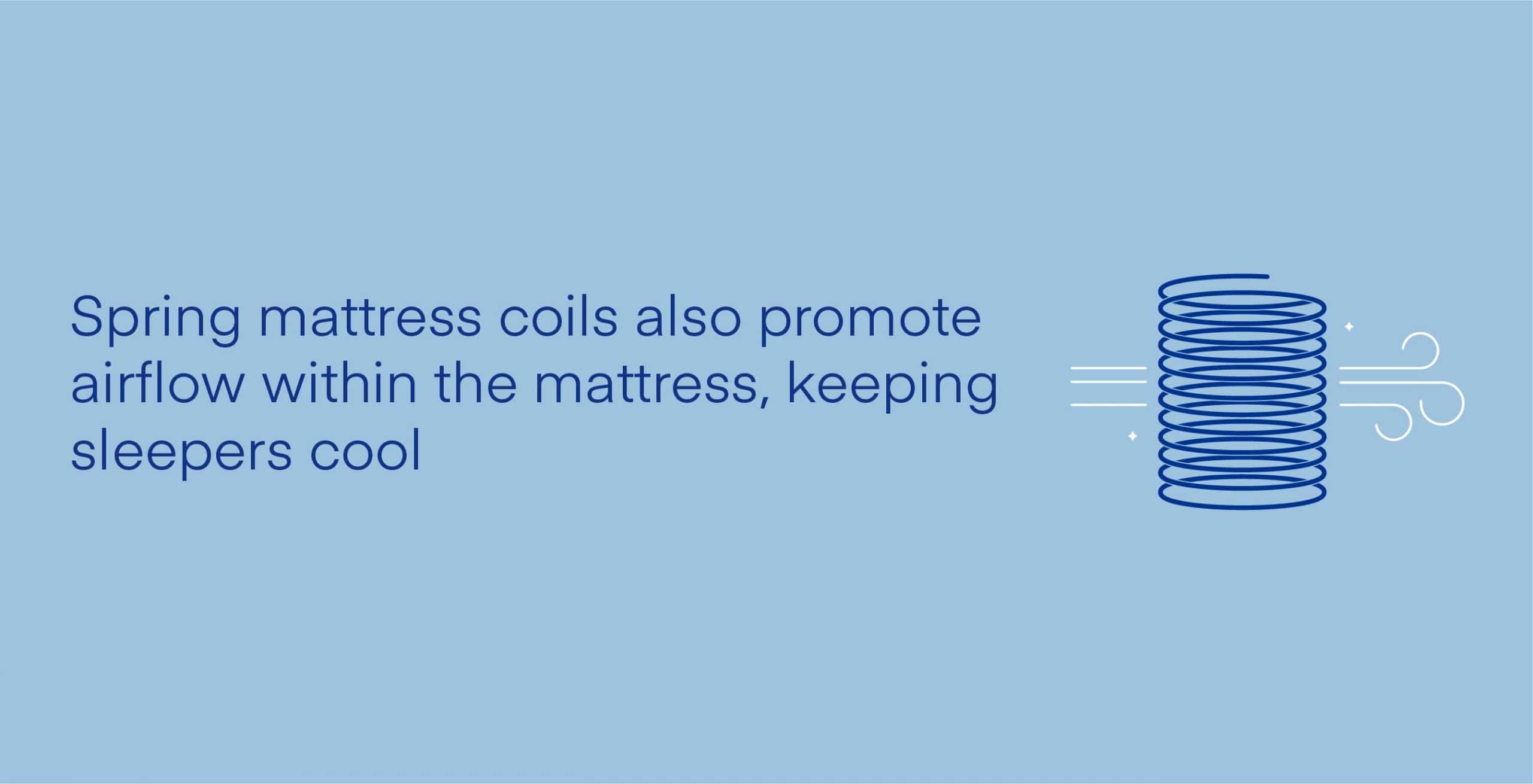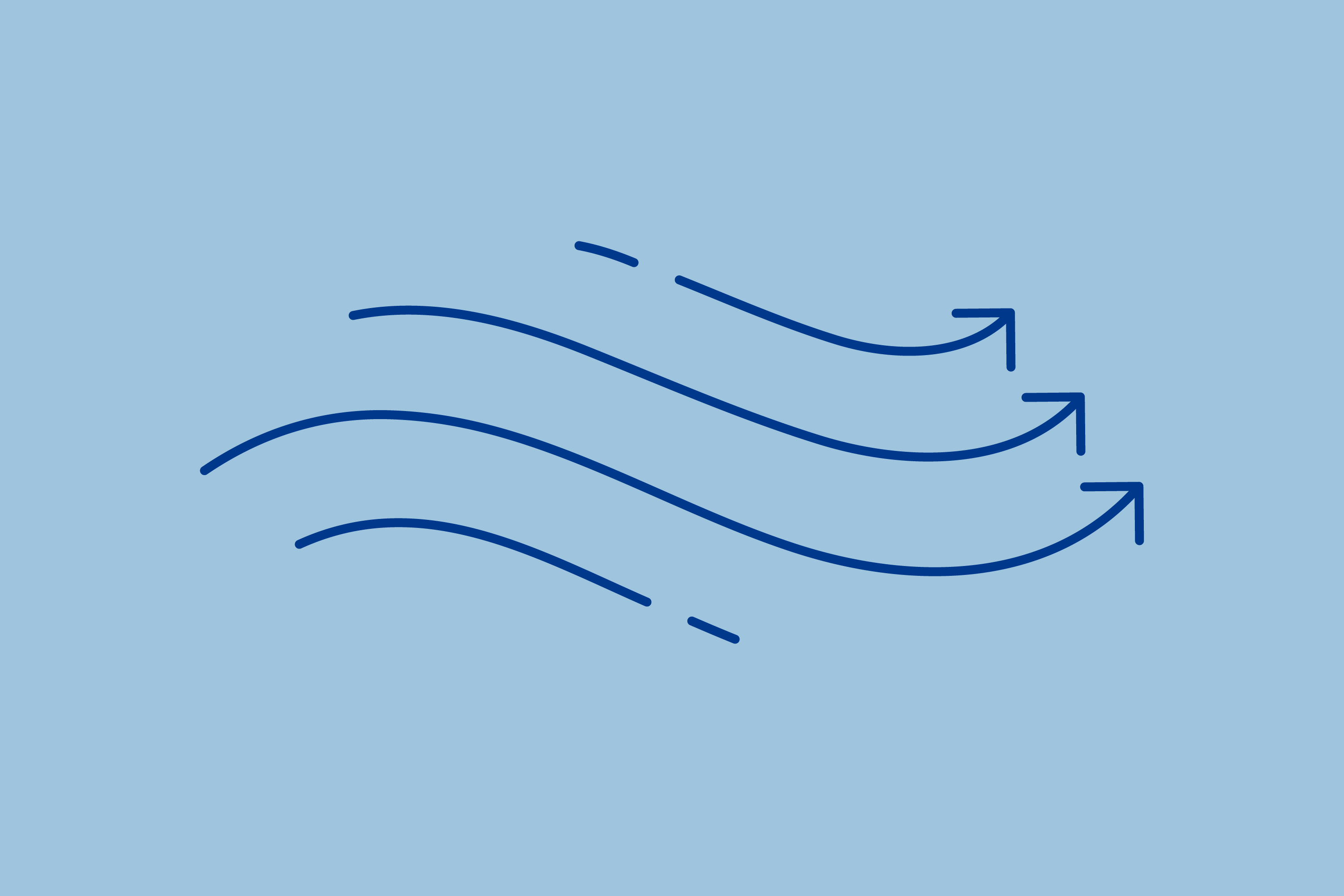You may have grown up sleeping on a spring mattress, but gel memory foam is a relatively new mattress material. Gel memory foam mattresses were introduced on the market in 2006. Both mattresses keep you cool, but they feel different.
If you’re considering whether to stick with the traditional innerspring mattress or explore the newer gel memory foam mattress, we can help you. In this article, we discuss all the aspects of both gel memory foam and spring mattresses to guide you to your best mattress.
What is Gel Memory Foam Mattress?
Gel memory foam was introduced to beat the drawback of traditional memory foam beds. The dense structure of memory foam can sometimes trap body heat, making sleepers feel hot. Mattress manufacturers addressed this concern by infusing memory foam with cooling gel.
Temperature and pressure-sensitive memory foam has many benefits. Memory foam softens in response to your body heat, conforming to your curves providing pressure point relief. The body-conforming feature of memory foam makes these beds popular.
Comfort Layer in Gel Memory Foam Mattresses
The presence of gel infusions in gel memory foam mattresses make these beds cooler than traditional memory foam beds. Cooling gel is either swirled into memory foam or added on top of the comfort layer to dissipate heat. This gel is made with “phase-changing materials” (PCM). PCM is a combination of non-toxic chemicals that change from solid to liquid with heat.
The cooling effect of gel memory foam mattresses may be temporary because once the PCM changes from a solid to a liquid state, it can’t cool anymore. The gel’s performance may differ because different mattress manufacturers use different chemical amounts in the PCM. Factors such as the breathability of the mattress cover and the room temperature also affect the performance of the PCM.
Gel memory foam mattresses cool you down while retaining all of the other benefits of traditional memory foam mattresses. Memory foam is excellent at isolating motion, making it a perfect option for restless sleepers.
If you don’t want to invest in a gel memory foam mattress, you can buy gel memory foam mattress accessories. Gel memory foam mattress toppers and pads are an affordable option for experiencing the feel of gel memory foam.
Pros and Cons of Gel Memory Foam Mattresses
Gel memory foam mattresses can enhance your sleep in many ways, but before you settle on a gel foam mattress, consider some of their drawbacks, too.
Benefits
- Provides a soft, body-conforming hug
- Contours to your curves, providing pressure-point relief
- Reduces body aches
- Promotes spinal alignment
- Enhances lumbar support, alleviating back pain
- Excellent motion isolation
Drawbacks
- Can be expensive
- New mattresses may have a chemical odor due to off-gassing
What is a Spring Mattress?
Spring mattresses were popular in American households before the introduction of memory foam beds. The characteristic features of spring mattresses are their springiness and bounce due to coils in the support layer. These coils also promote airflow within the mattress, keeping sleepers cool. But the coil layer transfers motion, causing sleep disruptions.

The thickness of the coils (known as coil gauge) and coil type determine the feel of the bed. The higher the gauge, the thinner the coil. Lower gauge coils provide firmer support while higher gauge coils are more flexible. Flexible coils shape themselves according to your body’s curves. Higher gauge coils are expensive and prone to breaking faster than lower gauge coils.
Four types of coils are used in spring mattresses:
- Bonnell: Bonnell coils are low gauge coils. They are the cheapest and most common coil. They generally have poor durability.
- Offset: Offset coils are flattened at the top and bottom, providing softer support than Bonnell coils.
- Continuous: Mattresses with a continuous coil layer are made by coiling a single wire. Continuous coils are less prone to breaking, making the mattress durable.
- Pocket: Pocket coils are the most expensive type because each coil is wrapped in fabric, reducing the effect of motion transfer. These coils are usually found in high-end beds.
Comfort Layer in Spring Mattresses
While all spring mattresses have a characteristic bounce, the materials in the comfort layer vary. The comfort layer contains natural fibers such as cotton or wool. These materials cushion you from the steel coils in the support layer.
Most spring mattresses have a pillow top or a Euro pillow top layer. It’s an extra layer of padding sewn on top of the comfort layer. In standard pillow tops, you can feel a gap between the comfort layer and the padding, but in a Euro top, the padding layer is stitched beneath the cover. The padding may contain memory foam, latex, wool, or natural fibers.
Spring mattresses can have a variety of materials in their comfort layer, giving you different options to choose from. You can also add a high-quality memory foam mattress topper to adjust the firmness of your innerspring bed.
Pros and Cons of Innerspring Mattresses
Innerspring mattresses were popular for many years for good reason; however, we know they’re not as popular anymore because they do have their drawbacks. Consider the pros and cons of these mattresses before purchasing an innerspring.
Benefits:
- Bouncy
- Promotes airflow
- Affordable
Drawbacks
- Motion transfer
- No pressure-relief
- Poor support
Difference Between Gel Memory Foam and Spring Mattresses
Both gel memory foam and spring beds are available in a variety of firmness options, but they include different materials in their top comfort layers. There are several other factors that differentiate gel memory foam mattress from a spring mattress.
| Parameters | Gel Memory Foam Mattress | Innerspring Mattress |
|---|---|---|
| Feel | Close conforming | Feels firmer than gel memory foam |
| Cooling | Cooling gel dissipates heat | Coil layer promotes airflow |
| Motion Isolation | Isolates Motion | Poor Motion Isolation |
| Off-Gassing | Can have an off-gassing odor | Not prone to off-gassing |
| Price | Expensive compared to innersprings | Rather inexpensive and budget-friendly |
FAQs
Do gel memory foam mattresses last longer than spring mattresses?
The answer to this question depends on the quality of your bed. A good quality spring mattress usually lasts 7 to 10 years. Cheaper spring mattresses don’t last long because they contain inferior quality coils which can lead to sagging. Gel memory foam mattresses can last up to 10 years.
Can soft mattresses cause back pain?
A mattress that’s too soft will cause your back or hips to sag and your spine to fall out of alignment, leading to back pain. A firm mattress will put too much pressure on your joints, increasing pain. Medium-firm mattresses conform to your body and enhance lumbar support—they’re often considered to be the best mattresses for back pain.
Which is better: a gel memory foam or a spring mattress?
If you like a body-conforming feel then you’ll prefer a gel memory foam mattress. But if you like firmer support, then you may like a spring mattress. Both the beds have a cooling effect and are good for hot sleepers. A gel memory foam mattress may be more expensive than regular spring mattresses.
Do gel memory foam mattresses off-gas?
Gel memory foam mattresses may have an off-gassing odor. The off-gassing odor usually disappears after you air it out for a couple of days. While the odor from off-gassing is sometimes unpleasant, it’s not harmful.
Conclusion
Gel memory foam forms the comfort layer of mattresses, while springs form the support layer of innerspring mattresses. If you like the bounce of spring mattresses and also enjoy gel memory foam’s body-conforming feel, you can opt for gel memory foam hybrids. Gel memory foam hybrids contain more than 2 inches of gel memory foam in the comfort layer, with coils in the support structure. That way you don’t have to choose between spring or gel memory foam, you get both in one bed!
About the author
Mitchell Tollsen is a graduate student and a freelance writer who’s contributed to the Early Bird blog for three years. Mitchell’s always been fascinated by the science of sleep and the restorative processes our bodies undergo when at rest. The self-titled “Sleep Expert” is always looking for ways to improve his shut-eye, and throughout the years has implemented numerous lifestyle changes and tried dozens of sleep-promoting gadgets to determine the best ways to truly get better rest.
View all posts





